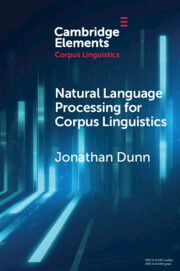Element contents
Natural Language Processing for Corpus Linguistics
Published online by Cambridge University Press: 04 March 2022
Summary
Keywords
Information
- Type
- Element
- Information
- Series: Elements in Corpus LinguisticsOnline ISBN: 9781009070447Publisher: Cambridge University PressPrint publication: 31 March 2022
